
Visited Techniquest, Cardiff Bay Wednesday on a field trip with DIFM course. Techniquest is an interactive science discovery centre. The purpose of our visit was to observe how visitors (mainly children between the ages of 8-16) interacted with the exhibits and to record our findings.
Techniquest boasts over 150 interactive exhibits, a science theatre where children can enjoy exciting live shows and a planetarium that simulates the night sky.
After an hour of observation and interaction with the exhibit’s we went into the science theatre. There the Head of Research and Evaluation - Dr Sue Cavell gave us a talk about Techniquest and then we had the opportunity to ask her any questions we had about Techniquest and the exhibits.
As we had only had an hour to observe the exhibits Dr Cavell kindly offered us the opportunity of a complimentary return visit. I took her up on her offer also taking my 10 year old son and his friend along with me.
For the purpose of the exercise I decided to concentrate my studies on one particular exhibit.
The exhibit I chose was named “Mixing Beats”
The “Mixing Beats“ exhibit’s scientific aim is to educate children about musical beats. The exhibit is designed to look like a modern DJ booth. By using a design that the children are already familiar with they are promted to use prior knowledge to aid their interaction. The design makes learning fun, which promotes greater retention of information and higher learning. The design also uses affordances the record affords to be turned the play button affords to be pressed.
”Children in the concrete operational stage (ages 7 to 11) are maturing on the brink of adult cognitive abilities. Though they cannot formulate hypothesis, and though abstract concepts such as ranges of numbers are often still difficult, they are able to group like items and categorize”
(Schneider, 1996).
These are old enough to use relatively sophisticated software, but young enough to still appreciate a playful approach.
The exhibit consist of two mixing decks each have a play/pause button, and a pitch and there is a cross fader between the two.
Above the decks is a large screen which displays a media player library containing two songs. To the left of the decks is an instruction panel which is universally used on all of the music exhibits. Using the same panel throughout makes it easier for the child to interact with the computre interface as they use their cognitive skills to perform the tasks and navigate through the menu.
The interface has four buttons with a display in the centre. The top left button gives instructions for the mixing decks. The top right hand putton changes the text to Welsh, the bottom left hand button is “Why Science” - which explains the science of musical beats and beat matching, they learn that all music has a beat but the speeds of the beat will differ. That the beats are measured in BPM (beats per minute). The bottom right hand button is the “Why Music” which explains to the user about how DJs use beat matching for smooth crossover between mixing records and about hip-hop and scratching. By using modern music examples it makes the exhibit more interesting for the user and is geared toward the 8 - 16 age groups.
The main instruction menu's HCI interaction drives the user. They are instructed to press the play button on one of the decks and to move the pitch up and down so that they learn that the pitch changes the records speed. They are then instructed to press the play buttons on both mixing decks at the same time and move the cross-fader side to side. All instructions are illustrated for ease of use by target audience.
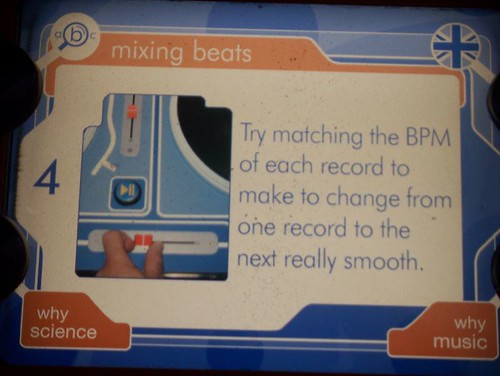
They are then driven to try to match the BPM of the two tracks. The wave track on the main screen above the tracks helps them to match the beats visually. The beats can be matched by either moving either record and my changing the pitch (speed which it is played).
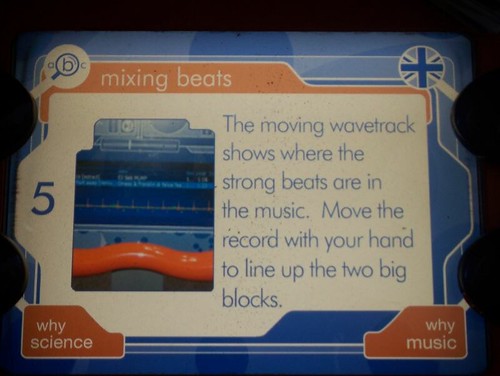
I noticed that 95% of the children didn’t read the instructions before experimenting by pressing the buttons on the decks. They used a trial and error approach and because they get an instant result of music being played it keeps them interested. At the exhibits that didn’t produce any result from a child pressing the buttons the child got bored after 10-15 seconds and rather than read the instructions they run on to the next exhibit. It seems the ability to capture a childs attention at the very start of the interactivity is extremely important.
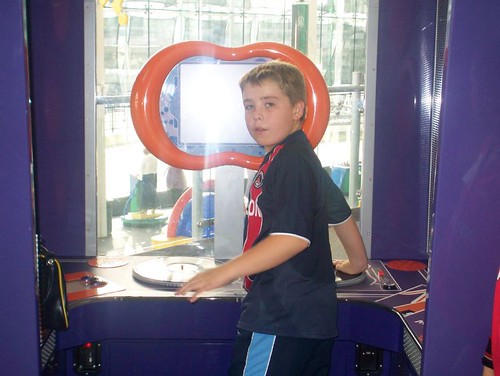
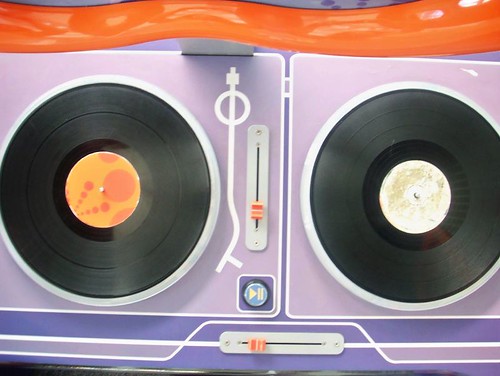
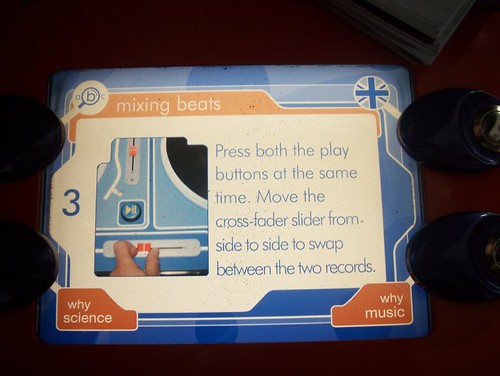

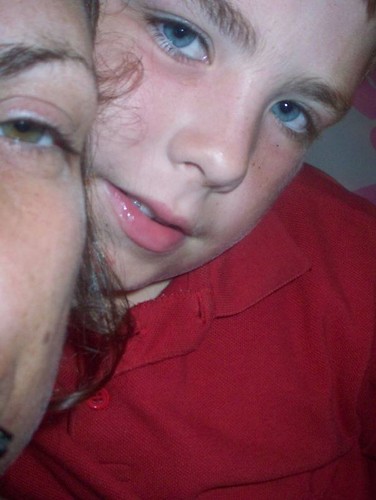
3 comments:
I stumbled upon this while goolging for something else. Good write up. I worked on the team that designed and built this exhibition so it's very interesting to read what other people think. There's a bit more about this interactive music exhibition at: http://www.interactive-exhibits.org/?p=491 Nick
Post a Comment